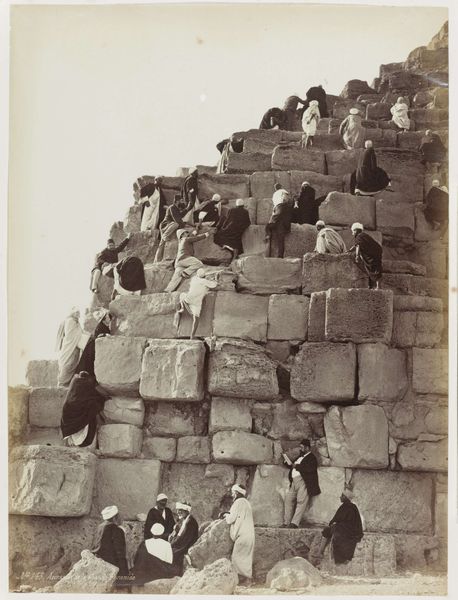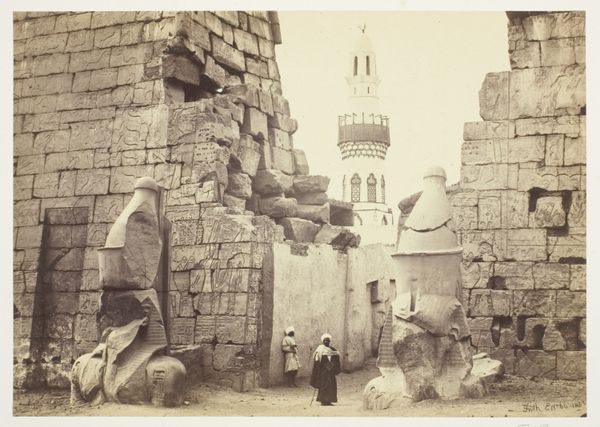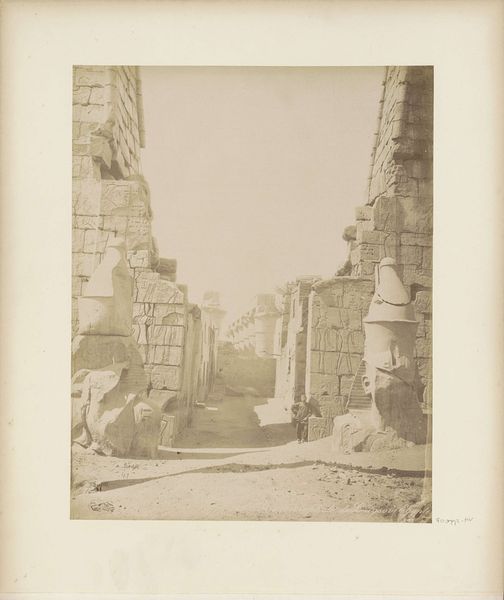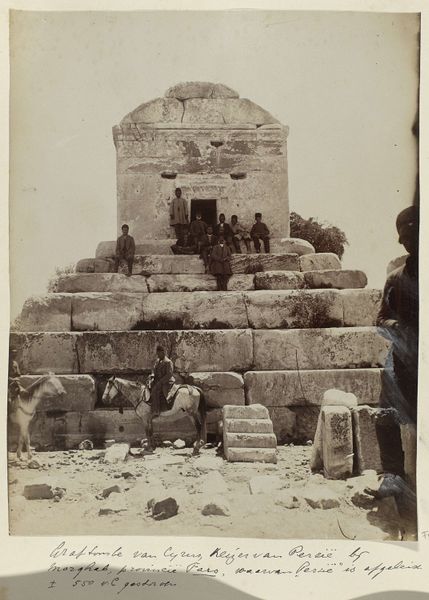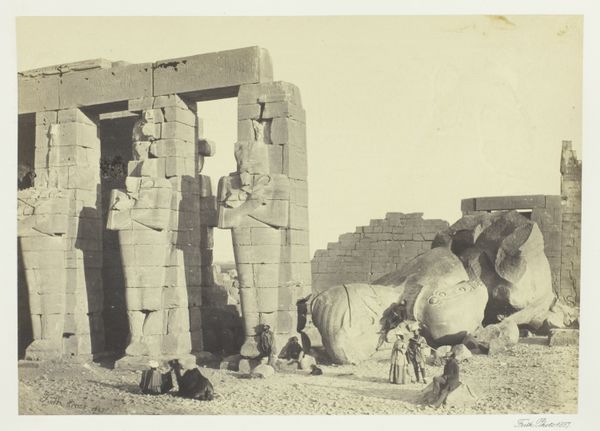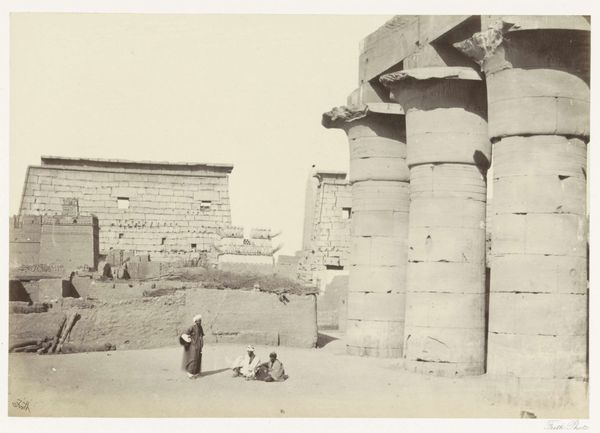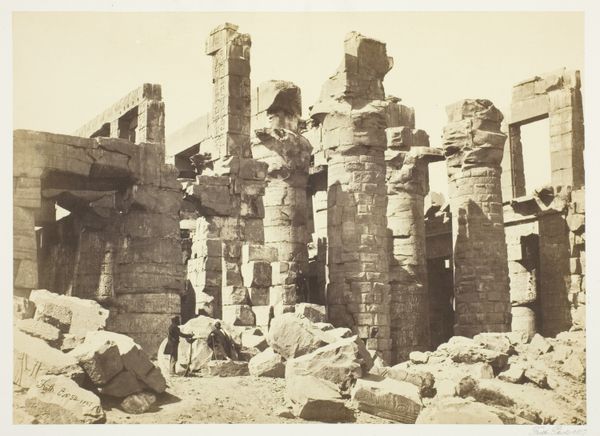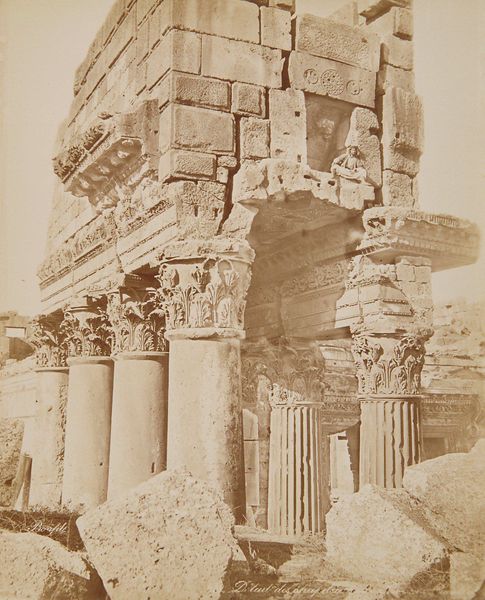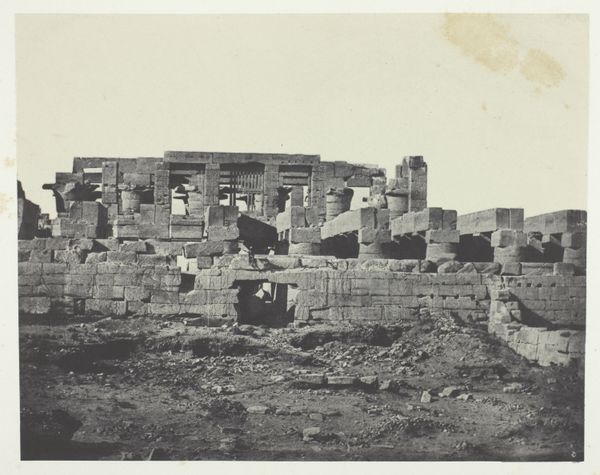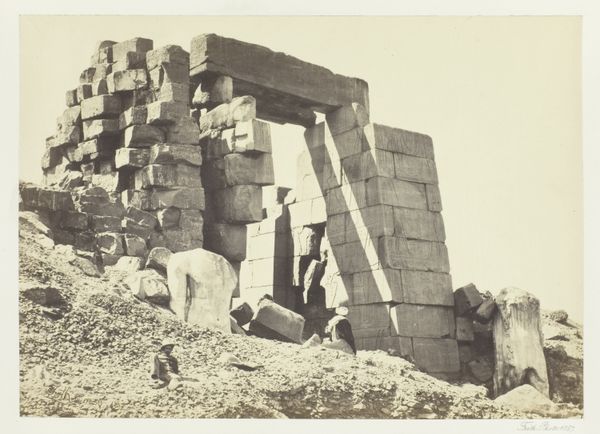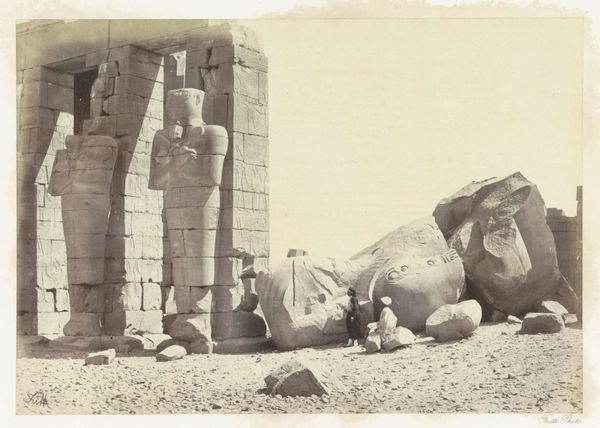
photography, gelatin-silver-print
#
portrait
#
landscape
#
photography
#
historical photography
#
ancient-mediterranean
#
orientalism
#
gelatin-silver-print
#
19th century
Dimensions: height 262 mm, width 204 mm, height 558 mm, width 469 mm
Copyright: Rijks Museum: Open Domain
Editor: This is Jean Pascal Sébah’s "Group of Men on the Pyramid of Cheops, Gizeh," taken between 1888 and 1895. It's a gelatin silver print, and the figures against the monumental stone blocks make me think about scale and labor. What jumps out at you? Curator: The image screams of Orientalism. The figures are posed upon what appears to be rough, unfinished stonework; evidence of quarrying and immense manual labour, while the sitters wear clothing that marks them both as ‘other’ and timeless, blurring the modern labour with ancient work. Do you consider how the artist’s commercial goals influence how he represents Egypt? Editor: That's a really interesting point – the exoticism being deliberately marketed. How would that affect our interpretation of the pyramid itself, presented more as a site of labour rather than solely as a majestic monument? Curator: It emphasizes the process of construction over the ideal, doesn’t it? By focusing on the textured surfaces and visible joints, the image draws our attention to the material realities: the stones, the cutting, the hauling... it moves the emphasis from pharaohs and divinity, placing value on the labour. Consider also that Sébah was part of a thriving industry churning out images for Western consumption. This connects the labor represented to his own as an artist-craftsman. Editor: So, the photograph itself becomes another layer of labor and production tied to the site. I'm starting to think about how the materiality of the pyramid is inseparable from the labor used in constructing it, both historically and in its photographic representation. Curator: Precisely. Sébah wasn't just capturing an image; he was producing a commodity rooted in specific historical and social conditions, embedded in the production chains of nineteenth century orientalist imagery. I will have to re-examine my initial presumptions. Editor: Thanks. It's definitely shifted how I see the photograph and the pyramids, understanding both through their material existence and the social forces that shaped them.
Comments
No comments
Be the first to comment and join the conversation on the ultimate creative platform.
